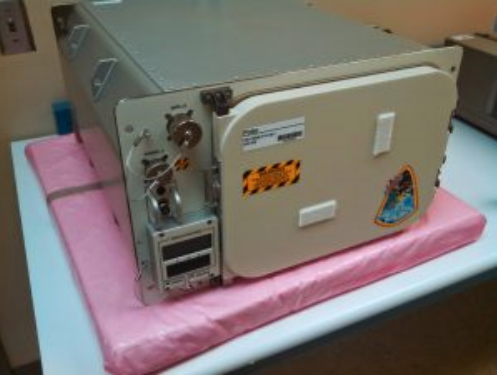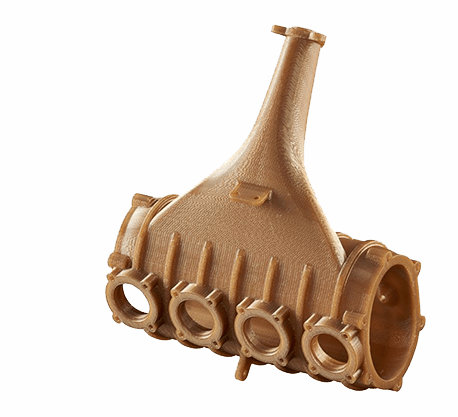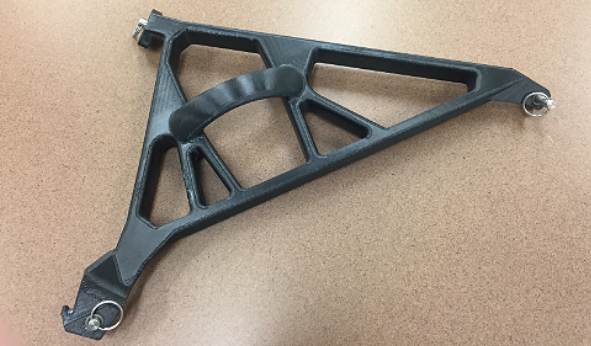The Evolution of Aerospace 3D Printing – Methods, Materials & Patents

3D printing (or additive manufacturing) plays a significant role in the evolution of aerospace industry by strengthening materials, lowering weight of components and streamlining designs. The aerospace industry has various commercial, military and industrial applications, and is comprised of departments that deal with the design, manufacture, operations and maintenance of aircrafts or spacecrafts. Notably, the airline industry was among the first advocates of 3D printing technology. The world’s first 3D printed aircraft was designed at the University of Southampton. Later in 2016, RUAG (Swiss Technology Group of Aerospace) designed a lightweight and highly stable antenna (used in sentinel satellite) using 3D printing that was another remarkable achievement in the aerospace industry.
Let’s have a quick peek at the impact of 3D printing in some of the most celebrated cases in this field:
- Aerospace Applications Leader of 3D Systems (Bryan Newbrite) stated, “The biggest change in the aerospace sector was actually the development of flame-retardant selective laser sintering. It costs $40,000 to $50,000 per kilogram to put a satellite in geostationary and so if you can design a structural bracket or an internal member of a satellite and shave a few kilograms, well then the actual added cost of having to build it out of additive is more than taken care of.” (MSC Industrial Supply Co.).
- After that the first 3D printed part used in aerospace was the Latrine Cover for use on the C-5M Super Galaxy cargo plane (a type of an aeroplane) that was built using additive manufacturing. MSgt. John Higgs (60th Maintenance Squadron aircraft metals technology section chief) stated, “The latrine covers we just printed, usually take about a year from the time they’ve been ordered to the time they’ve been delivered.” Comparatively, the field unit (60th Maintenance Squadron) printed two of the covers in 73 hours using 3D printing. (DefenseWorld.net).
Table of Contents
History of 3D Printing in Aerospace: Highlights
- In 2011, aerospace engineers designed the world’s first 3D printed aircraft at the University of Southampton. The entire structure of laser sintered aircraft (SULSA) was printed from the wings to the integral control surface. The weight of SULSA was 3 kgs, with a span of 1.2m and a cruise speed of 50 knots (58mph) and flew almost silently. Professor Jim Scanlan (Professor of Aerospace Design) explained, “The aircraft’s structure is very stiff and lightweight, yet highly complex. If it was manufactured conventionally, it would require a large number of individually tailored parts that would have to be bonded or fastened at great expense.” (University of Southampton)

- After that in 2015, Airbus invented another 3D printed aircraft which was shown in the Berlin Air Show, 2016 – the Airbus THOR (Test of Hi-tech Objectives in Reality), an unmanned aerial vehicle. It was the world’s second 3D printed aircraft whose entire body was made by 3D printing except the electrical engine parts of the model. Notably, THOR is a windowless drone that weighs 46 pounds (21 kilograms) and is less than four metres (13 feet) in length. The Managing Director of Hofmann Innovation Group – Jens Henzler, stated, “the printed pieces have the advantage of requiring no tools and they can be made very quickly.” The metal parts produced can also be 30-50 percent lighter than before, and there is almost zero manufacturing waste. (source)

- After using additive manufacturing, the new antenna bracket that was used in sentinel satellite exceeded all expectations. This was the challenge for the Swiss technology group RUAG in the construction of sentinel satellite designed for observing the planet. After the redesign of the antenna bracket, aerospace engineer Mouriaux stated, “we are happy with the results of this project. We entered uncharted territory on the process side and were rewarded with a stable, lightweight component.” (EOS)

- However, 3D printing does not stop with planes. Engineers are also looking to use it in space. The European Space Agency (ESA) is planning to launch their Ariane 6 rocket in 2020, which is set to feature 3D printed parts. The Ariane 6 is priced at half the cost of its predecessor Ariane 5.
The Evolution of Aerospace 3D Printing Materials
3D printing’s success in the aerospace industry is attributed to the quality of the material. 3D printing materials are not in need of welding or complex machinery. The output is in one piece which allows manufacturers to save time or cost of parts without compromising on the quality. Manufacturers are still experimenting with 3D printing materials, but many have had success in creating quality parts faster and cheaper. Commonly used materials in aerospace include:
| Material | Properties | Applications | Image |
| ULTEM 9085 | ULTEM 9085 has a high strength-to-weight ratio Flame-retardantHigh heat deflection. | NASA chose Stratasys Ultem 9085 to create the 30 antenna arrays that were vital to the success of this project. In International Space Station, the interior liner for their freezer is made of Ultem 9085. |  |
| ULTEM 1010 | High-Strength; Heat Resistant; FDM(Fused Deposition Modeling) Thermoplastic; Chemical resistance; Tensile strength. | Non-FST (flame, smoke, and toxicity) components such as ducts, clips, semi-structural components. |  |
| Nylon 6 | Strong and tough FDM (Fused Deposition Modeling) material. | 3D printed glass-filled nylon micro vanes designed to reduce drag. |  |
| Nylon 12 | Strong FDM thermoplastic; High impact strength; Superior fatigue resistance. | Nylon 12 parts for everything from tooling, jigs and fixtures to container covers, side-panels and high vibration-load components. |
The Evolution of Aerospace 3D Printing – Methods
There are several ways to 3D print parts. All undermentioned technologies are used to create objects.
- Vat Photo Polymerisation: Vat Photo Polymerisation is the process based on hardening of photopolymers on exposure to ultraviolet radiation. There are two common Vat Photo polymerisation techniques:
- Stereo Lithography (SLA): The biggest advantage of stereo lithography is its speed.

- Continuous Liquid Interface Production (CLIP): CLIP is the latest innovation in Vat Photo polymerisation technique which is 100 times faster than the traditional SLA technique.

2. Material Jetting: Material jetting creates objects like two-dimensional ink jet printer. Material is jetted onto a build platform using either a continuous or Drop on Demand (DOD) approach. Notably, the material is jetted onto the build surface/platform, where it solidifies. Thus, the model is built layer-by-layer. Material is deposited from a nozzle which moves horizontally across the build platform/surface. The material layers are then hardened using ultraviolet (UV) light. 3D printing with Material Jetting produces multicolour designs with a good surface finish. (Loughborough University)

3. Material Extrusion: Material Extrusion 3D printing technology uses a continuous filament of a thermoplastic material as a base material. The filament is fed from a coil, through a moving heated printer extruder head, often abbreviated as an extruder. The molten material is forced out of the extruder’s nozzle and deposited onto a 3D printing platform, which can be heated for extra adhesion. When the first layer is completed, the extruder and the platform are separated. The second layer can then be directly deposited onto the growing workpiece. The extruder head is moved under computer control. At least three axes are required for the extruder to move in Cartesian architectures. (3D EXPERIENCE Marketplace).

- Fused Deposition Modelling (FDM): UK-based Marshall Aerospace and Defence Group has revealed various ways in which it is employing 3D printing technologies, and specifically Stratasys’ FDM systems, to produce flight-ready parts for aircraft and ground-running equipment. The company says that additive manufacturing has enabled it to reduce production costs for certain components, while often also reducing weight.

4. Powder Bed Fusion: The Powder Bed Fusion process includes the following commonly used printing techniques:
- Direct metal laser sintering (DMLS)
- Electron beam melting (EBM)
- Selective heat sintering (SHS)
- Selective laser melting (SLM)
- Selective laser sintering (SLS)
Powder bed fusion (PBF) methods use either a laser or electron beam to melt and fuse material powder together. Electron beam melting (EBM) methods require a vacuum but can be used with metals and alloys for creating functional parts. All Powder Bed Fusion processes involve spreading of powder material over the previous layers. There are different mechanisms to enable this, including a roller or a blade. A hopper or a reservoir below or aside the bed provides fresh material supply. Direct metal laser sintering (DMLS) is the same as SLS, but with the use of metals and not plastics. The process sinters the powder, layer-by-layer. Selective Heat Sintering differs from other processes by way of using a heated thermal print head to fuse powder material together. Layers are added with a roller in between fusion of layers. A platform lowers the model accordingly. (Loughborough University)

Rise in patents heralds future growth
After the evolution of 3D printing in aerospace, thanks to increase in speed of manufacturing and ready availability of advanced materials, patent applications in the domain saw a sudden rise, indicating that companies are working on new methods to improve 3D printing in aerospace and will continue to do so in the future.

(X-axis depicts count of patents & Y-Axis depicts year of filing)
In essence, 3D printing has revolutionized the world of manufacturing especially the aerospace industry which started with manufacturing components. Most of the parts used in aerospace manufacturing are developed with the help of additive manufacturing. Currently aeronautical engine manufacturers are using EBM (electron beam melting) and Direct DMLS (metal laser sintering) technologies for creating parts of aircraft engine with the help of 3D printing. The progress shown over the years is a good indication for 3D printing in aerospace industry.
– Brijraj Malav, Parteek Saxena (Engineering) and the Editorial Team




